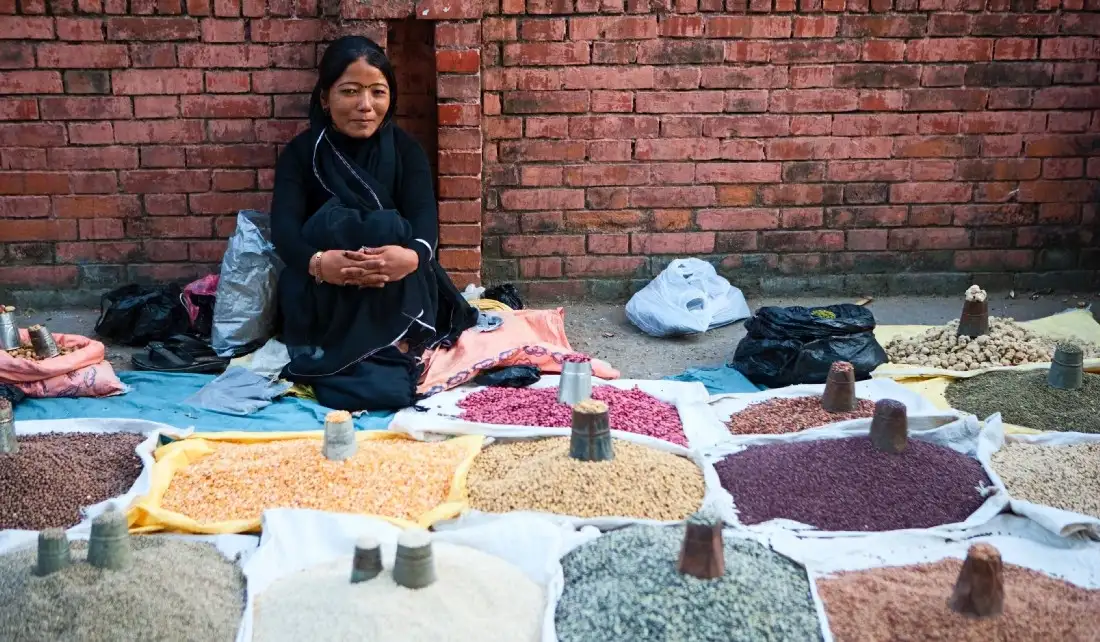
According to the Human Development Report (HDR) of Uttarakhand (2018), around two-thirds of the state is self-employed with about 20% of the population employed in casual work — not utilising their full potential. We intend to undertake an intervention with about 50 gig workers associated with the Vikas and Pragati cooperatives, in a small village Hawalbagh in Almora which lies in the Kumaon region of the Uttarakhand state. These workers are occupied in the making of home-based products such as jam, sauce, chutney and squash; as well as in the organic processing and preservation of grains and spices such as millet and turmeric.
In a preliminary research conducted with a small sample, we encountered one question repeatedly on their behalf: ‘Where and how do we sell our products?’ We have come to realise that the quest for answers holds the key to the generation of sustainable livelihood and social security for potentially thousands of gig workers living and working in the hills of Uttarakhand. We believe understanding income volatility issues will be a starting point.
The need to undertake this research is threefold:
● The gig workers of Uttarakhand are associated with varied Self-Help Groups (SHGs)/co-operatives supporting natural products but are struggling to find buyers for their product; mainly as they lack the business acumen and marketing skills.
● The gig workers’ livelihoods are completely dependent upon the sales that these SHGs/co-operatives are able to generate. Till these become sustainable and self-sufficient, the livelihood of the gig workers are at stake.
● Lives of these gig workers can be significantly improved if we are able to create a viable business model to sustainably improve the bottom line of these co-operatives. We believe that this model, once identified, can be replicated to improve lives of people across various parts of Uttarakhand (and beyond).
The key deliverable of this research project is to explore a viable business model (with a clearly established market linkage mechanism) for agricultural value-added products made in the hills of Uttarakhand. The products made by the SHGs of the Uttarakhand are of the highest quality, with barely any added chemicals or essences. The conventional retail chains claim 35–40% share of the market price, making it unviable for anyone to make high quality value-added products at a small scale. Selling such products sustainability would entail creating a market linkage which could benefit the community as well as customers.
For instance, there isn’t a market for many products (such as jam and chutney) beyond Rs 200 per unit. And these products (with high purity and concentration of fruit) cannot be made below Rs 120 per unit. The margins of a conventional retailer leave nothing on the table for the producers; they cannot be assured of a sustained livelihood by selling at the occasional fests/melas[1]. There is a grave need for exploring another market linkage mechanism that offers adequate margins to the manufacturers of these pure products.
As a possible extension of this project we also plan to record financial behaviour, social issues and literacy levels of these workers. We hope this would help us estimate the most optimal financial needs of these gig workers through the model that we propose.
References
[1] Fairs
